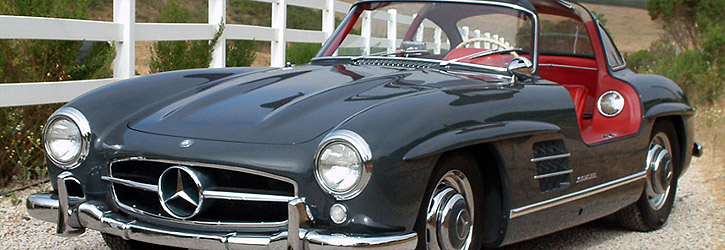
Our Classic Car Preservation Process
Scott Grundfor Company is of the opinion, like many other restoration industry leaders and collectors, that preservation cars will be the pinnacle of the collector car market for the foreseeable future. Original cars are very special as is, but they can be so much more and given a new breath of life, an awakening of sorts, through our preservation and conservation processes.
“The point is to preserve the original (automobile), so as not to be perfect, but extremely well kept and treated without leading to the creation of the new (car)…”
— Smithsonian Mantra
All preservation processes performed by Scott Grundfor Co. are meant to be reversible so that, as the past has shown us, future generations, with likely advanced care and maintenance methods, will be able to amend processes done that might not have been possible during the period preservation processes were undertaken.
A preservation automobile needs to be analyzed and protected, and as such, we have developed a comprehensive program to not only bring out the true patina of a car, but also to document the car thoroughly from it’s history before we came into contact with it to the creation of a comprehensive logging system we’ve created based on the Smithsonian’s methods that will be a starting point for future provenance.
Vintage Car Documentation Is Vital
One of the most integral parts of classic car preservation is preserving its history. One of the first things that must be done when assessing the preservation needs of a particular classic automobile is establishing its provenance. A car with well documented ownership and maintenance records is almost always easier to appraise monetarily and nearly without exception a more valuable commodity, not to mention it’s much easier to assess for preservation processes moving forward.
Once a car’s past has been established, the time to begin documenting its new history from the day the preservation process begins. All the information logged during the preservation process should be kept with the car for the rest of its life, and should be added to over time to make sure that its historical record remains detailed and sound.
Proper documentation will become a necessary asset for competition both in rally racing and show in the future, and is already being vetted and classified by FIVA, an organization dedicated to uniform codes for the classic car industry as a whole.
Preservation: A Car Is Only Original Once
In all genres of collectible and historical artifact, few things are valued more than originality. Well preserved and cared for examples of rare and relevant pieces of history have no substitute in terms of importance in the historical record. From historically relevant fine art to the time tested mechanical ingenuity of a by gone era, well kept original pieces sit at the top of the food chain.
The car, as one of the defining and enduring symbols of 20th Century progress, is understandably going through the same processes as other iconic popular culture symbols…it’s becoming a part of history itself and valuable in that sense alone.
Valuation of a Preservation Car
Desirability inevitably drives any market. Over the past few years, it has become increasingly evident that there is a shift in valuation going on in the vintage car market insofar as fully restored automobiles are being supplanted at the summit of the industry by well preserved (and sometimes even not so well preserved) original examples of similar cars. Originality and value for classic cars, as with all other collectibles, go hand in hand.
Originality alone however, does not make the automobile. In this burgeoning idea and market of preservation, there are other ideas to consider. What is the cars provenance? Did someone of public note own the car? What is the general value of a restored version of the car?
Possibly the most important interest to consider along with originality is rarity. Rarity is always a consideration, and by nature, with a car only being original one time in its life, it is imperative to examine the originality of the type of car being dealt with as well as how many of the cars in question are still in their original condition. Obviously, the rarer the car, and still rarer the amount of original ones, the more valuable the automobile will be.
FIVA Standards
“Fédération Internationale des Véhicules Anciens”
FIVA (www.fiva.org) is responsible for the creation of unified standards for vintage racing competition, classification standards for show events where cars are to be judged side by side and in general the proper preservation standards to provide a format to keep vehicles historically correct as a part of our technical and historical heritage.
Founded in 1966, FIVA is an international body created to promote and guide the interests of the historic vehicle movement throughout the world. At present FIVA can boast over 85 member organizations in more than 62 countries throughout the world, which in turn represent more than 1.500.000 historic vehicle enthusiasts.
FIVA is, as one of its primary goals, concerned with the preservation of historic vehicles, which are accepted as being an important part of our industrial heritage. Attempts are being made to catalogue as many historic vehicles as possible through the FIVA Vehicle ID card. FIVA also has important links with ‘Fédération Internationale de l’Automobile’ (FIA) to promote the interests of historic cars in more sporting arenas.
In an effort to remain current with trends in the automotive preservation movement, Scott Grundfor Co. sees FIVA as playing a vital role in the future regarding and takes its standards and recommendations into account during preservation processes.